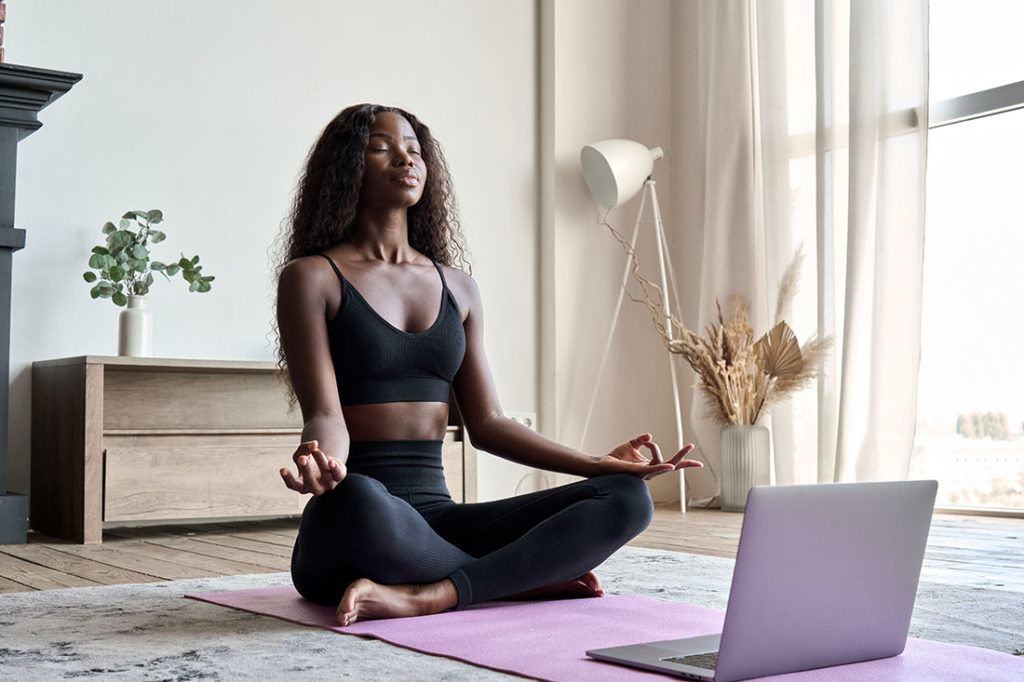More than a decade of research has found that meditation reduces anxiety and stress, and the results can be life-changing. Prolonged anxiety can impact your entire body, and has been associated with depression, poor digestion, increased risk of heart attacks and a weakened immune system.
So how can you use meditation to reduce anxiety and get on a path toward better health and well-being?
Simple breathing exercises to combat panic attacks
Panic attacks can be frightening. You may experience shaking, sweating, nausea, intense fear, a racing heart and even chest pain. The calm, mindful state provided by meditation is likely out of reach in these moments. Yet, basic meditation techniques can be effective in coping with a bout of severe anxiety.
First, remove yourself from the stressful situation to whatever extent is possible. Then, practice deep, measured breathing. Guy Joseph Ale, the founding president of Lifespan Seminar, provides a simple breathing exercise to help you manage stress. You may find that a calming mantra also assists in clearing your mind while also guiding the duration of each breath.
Make sure to practice slow, deep breathing before a panic attack sets in. That way, you’ve already trained yourself to deal with the situation. Many meditation apps such as Calm and Breethe include useful breathing exercises to get you started.
Self-guided meditation to reduce anxiety
Even if you don’t suffer from anxiety attacks, you may still suffer the physical and emotional effects of anxiety. In fact, you can become so used to feeling “stressed out” that you just accept it as your normal state. This acceptance is especially pernicious in that the harm to your body still occurs and has, in fact, become chronic.
So what meditation techniques can you use to reduce daily anxiety?
Find quiet time alone.
Make time for your self-care. An hour is wonderful, but if all you have is fifteen minutes—use it! Turn off your phone and seclude yourself from interruptions. Draw the blinds and reduce light levels. Create as much of a cocoon as you can for yourself. If external noises such as traffic distract you, consider turning on soothing music at low volume.
Make yourself comfortable.
Lying down may seem tempting, and maybe you could use a nap. But a part of using meditation to reduce anxiety includes learning how to practice mindfulness and moderate your stress while awake. A comfortable chair, pillows on the floor or to prop you up in bed, or a meditation pillow can each help. Find your best, most comfortable fit.
Relax with measured breathing.
Slow, measured breaths help calm your entire body. Inhale slowly and deeply through your nose, hold that breath for a moment, and exhale through pursed lips. If you become at all light headed, adjust your breathing pattern until that sensation subsides. Practice taking breaths from your lower chest and belly, also known as diaphragmatic breathing.
Consider using visualization techniques.
After a minute or two, you may find plans, outcomes and other thoughts entering your mind. Simply put, these are worries. You want to be rid of them at the moment, and this is where visualization comes in handy. Visualize—that is, imagine—whatever calms you. It may be a tranquil lake, forest retreat or ocean waves washing across the shore in time with your breath. Not only do such images help alleviate anxiety, but they move your mind away from worries.
How do I know when I’m finished meditating?
Even seated upright, you may still drift to sleep. Then, you will likely awake within seconds or a few minutes. You may feel immediately charged and even hyper-aware. Don’t fight it. Continue your day, and follow the same steps again tomorrow. Even if you don’t fall asleep, your body tells you when you are replenished.
If you are on a tight schedule, setting some form of timer—on your mobile device, for instance—may be necessary. Just be certain that any form of alarm is gentle and soft. For additional information as you build a regimen, see How Long Should You Meditate?
Is that it? Did I just meditate?
Yes!
With these steps as your guide, you have performed a basic meditation to reduce your anxiety levels. Practiced regularly, you will do more than relieve stress in the moment. You will gain the skills to reduce anxiety in the long-term.
Guided meditations to reduce stress and increase mindfulness
Some beginners find self-guided meditation frustrating and simply give up. Please don’t let that happen to you. Too much is at stake, and you can find tools to help guide you. The best meditation apps provide features for anxiety relief, mindfulness, sleep assistance and more. For the meditation beginner, maybe the best feature is guided meditations. Trained mindfulness coaches and meditation experts walk you through meditations lasting from just a few minutes to an hour or more. They do so with kind voices, gentle sounds and even relaxing visuals to get you started. Many offer programs specifically geared toward anxiety relief.
Defeating anxiety is within your grasp. Meditation provides one of the best tools in helping you reduce stress, gain mindfulness and get started on the path toward a healthier, happier life without the pain of anxiety.





